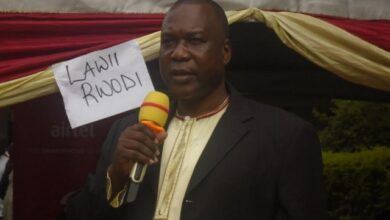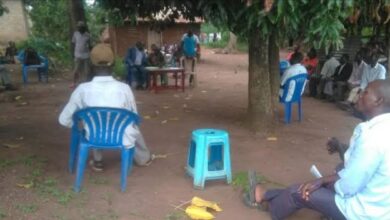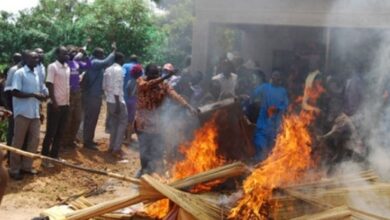
By Guest Writer
Opinion: According to the Notre Dame Global Adaptation Initiative (2021), Uganda ranks as the 13th-most-vulnerable country in the world to climate change and 160th out of 192 nations in readiness to confront the threat.
Uganda’s vulnerability is exacerbated due to its high level of poverty and its high dependence on ‘climate-sensitive sectors, i.e., agriculture, water, fisheries, tourism, and forestry. The country is also at high risk for natural disasters such as flooding, drought, and landslides; however, its topographic diversity and highly marginalized segments of the population make it additionally vulnerable.
Additional non-climate stressors, such as inadequate infrastructure to handle the increasing population, are also impacting the vulnerability to natural disasters and climate change.
On November 14, the media reported that three people drowned in the flooded sections of the rivers Mayaja and Lugogo in Nakasongola and Nakaseke districts in two days.
The deceased were identified by the residents as Charles Ssenoga, who was a cattle trader in Kapeeke town, Nakaseke district; Vicent Waswa, a resident of Kaseeta village; and Sam Akimana, a resident of Kinoni village in Nakasongola district.
It is noted that the deceased failed to maneuver through the fast-flowing water near the bridge, which was washed away by the River Mayanja at Kyererezi village in Kapeeke Sub County, Nakaseke district.
Mr. Moses Ssenfuma, the Kapeeke chairperson, added that patients are stuck in the villages and several primary school pupils have stopped going to school because they have nowhere to pass and fear drowning. Sam Kigula, the Nakasongola district chairperson, added that the flooded water dams and sections of Lugogo drainage have become death traps, hence worrying the residents, and it is noted that all this is caused by climate change in those areas.
The floods are said to have been caused by the heavy rains that intensified last week, causing several small rivers, including the Lugogo River, to burst their banks and wash away the roads.
The increased intensity of heavy rainfall has led to a greater impact of floods and is causing more damage due to expanded infrastructure, human settlement, and the general development of the country. Flooding, particularly in low-lying areas of the country, presents the largest risk.
It is noted that each year, floods impact nearly 50,000 people and cost over $62 million. 39 Uganda experiences both flash floods and slow-onset floods, which are common in urban areas, low-lying areas, areas along river banks, and swamplands. Areas most prone to floods are the capital city, Kampala, as well as the northern and eastern areas of the country.
Heavy rainfall in arid areas has led to flash flooding, causing infrastructure damage. Areas such as Nakasongola District face large challenges in the rainy seasons as large areas of the district become impassable, often resulting in food shortages and inaccessibility to health facilities and schools due to the destruction of roads and bridges from flooding.
Like many countries around the world, Uganda is experiencing significant impacts of climate change. Weather patterns are changing, and water levels in several water bodies are dropping. Extreme weather events such as floods, landslides, and prolonged drought are becoming more frequent in the country, threatening people’s livelihoods (Irish Aid, 2016).
Less than a month ago, floods in the Eastern region triggered by heavy rainfall claimed the lives of at least 30 people, left 400,000 without access to clean water, and destroyed more than 2,000 hectares of crops (Relief Web, 2022; Guardian, 2022). In that Uganda’s economy is heavily reliant on agriculture, this makes the country highly vulnerable to the effects of climate change (Selormey, Dome, Osse, & Logan, 2019).
Therefore, increasing investments in climate action to stop flooding in Nakaseke and Nakasongola districts is crucial since they are the most affected districts currently with floods.
The government can prioritize different actions, like building robust drainage systems, embankments, and flood barriers to manage the water flow, educating and involving local communities in flood risk reduction strategies, including early warning systems and emergency preparedness, enforcing regulations that encourage sustainable land use, and promoting climate-resilient infrastructure. This can help mitigate the impacts of floods in order to save people’s lives from climate change and conserve our environment.
In addition to the above, the government should collaborate with NGOs, international organizations, and the private sector to secure additional funding to allocate enough resources to bridges and expertise for comprehensive flood mitigation efforts to significantly reduce the impact of flooding in Uganda.
The author is Olive Atuhaire, an AFIEGO Research Associate.
Disclaimer: As UG Reports Media LTD, we welcome any opinion from anyone if it’s constructive for the development of Uganda. All the expressions and opinions in this write-up are not those of UG Reports Media Ltd. but of the author of the article.
Would you like to share your opinion with us? Please send it to this email: theugreports@gmail.com.






